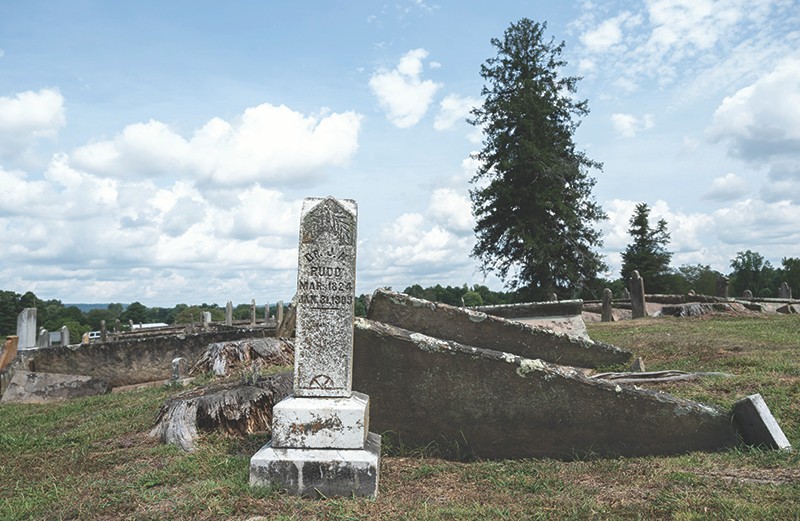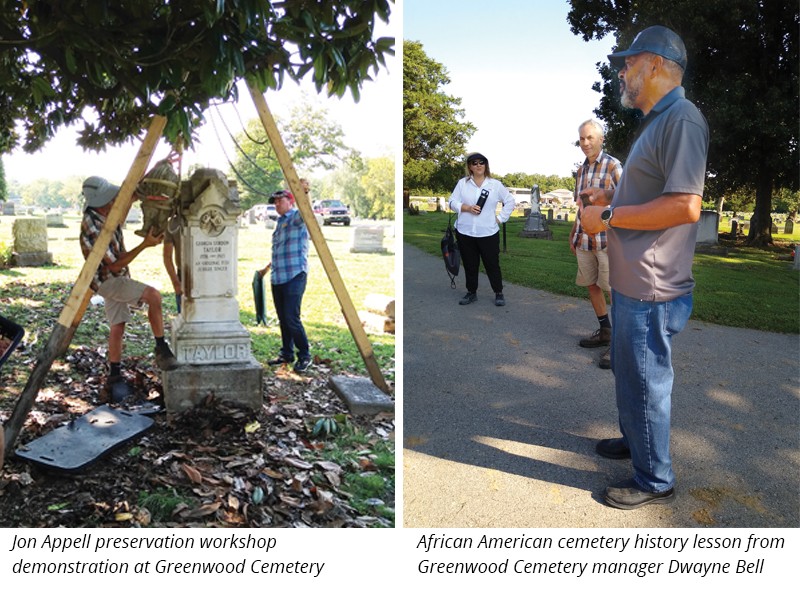Tennessee Historic Cemetery Preservation Program’s Online Resources

By Graham Perry, THC Cemetery Program Specialist
Recognizing that early cemeteries were becoming lost or destroyed, the Tennessee General Assembly created Tennessee Code Annotated, Title 46 Tennessee Cemetery & Burial Site Laws (1911). This code was bolstered by precedent established by Walter Hines v. State of Tennessee (1911). With exceptions, cemetery protection laws have remained unchanged since 1911. Tennessee cemetery code has not always kept pace with forces of progress. Economic development and cultural identity—both of which contribute to our state’s uniqueness—have not always been compatible. For this reason, the Family Burial Grounds Protection Act was passed and added to Title 46 as Chapter 8 in 1996. In 2018, Title 46 was amended, authorizing and requiring the Tennessee Historical Commission to post all cemetery petitions, maintain a Historic Cemetery Preservation Specialist position, and form the Historic Cemetery Advisory Committee to examine current law for the purpose of recommending any necessary changes. Taking these requirements to the next level, the Tennessee Historical Commission has added dedicated historical cemetery preservation program pages to the agency’s new website: www.tn.gov/historicalcommission/state-programs/tennessee-historic-cemetery-preservation-program.html.
In addition to the page where legal notices and petitions related to cemetery relocation or removal are posted, website visitors will find pages devoted to laws and guidelines concerning historic cemeteries; the forthcoming statewide cemetery register; a guide to cemetery preservation practices; and a frequently asked questions section. These pages are accessed by clicking on the page listing in the menu located on the left side of the program’s main page.
Please keep in mind that cemeteries face many threats. Deterioration due to natural factors is probably the most serious. Most other damage is done by people--even sometimes by those who try to preserve them! Headstones and cemetery features are exposed to acid rain, water damage, incorrect cleaning and maintenance techniques, uncontrolled plant growth, and even gravity. Even though commercial development, agricultural land-clearing, and desecration are probably the best-known threats, improper cleaning, and restoration techniques are just as--if not more--damaging.

To ensure a cemetery’s continued survival:
• When in doubt, do nothing —
While a headstone might look like it is in serious need of conservation or preservation, doing nothing is always safer than doing something that might cause lasting damage. If you are unsure of what to do in such a case, contact a professional.
• Contact the cemetery owner — Although descendants have the perpetual right to visit and maintain the family cemetery, it is a good idea to contact any surrounding property owners prior to visitation to avoid confrontation. Also, consider reaching out to other descendants so they know what you are doing. They have the same rights you do, and they might even help!
• Have a plan — Be sure to be prepared for your trip to preserve a cemetery. Wear proper attire, carry proper equipment, and walk the grounds. In short, make sure what needs to be done before you accidentally destroy something due to lack of preparation.
• Use D/2 solution, a soft-bristle brush, and water to clean headstones.
See website for more information.
• Do NOT pressure wash headstones — High-pressure water cleaning always damages headstones even if the damage is not visible and it often leaves unsightly marks. Cleaning by hand using soft-bristled brushed, soft plastic spatulas or a low-pressure sprayer is best. The less abrasion used the less the damage. Water is ok for cleaning as is D/2, but do not use over-the-counter cleaning chemicals. They will also cause damage.
• Refrain from string trimming around headstones — Like pressure washing, string trimming can damage the headstone even if the erosion is not apparent. Hand trimming is best. If a string-trimmer is to be used, always use the lightest gauge string available and angle the trimmer head toward the ground to minimize damage. Herbicide use is NOT recommended.
• Never reset headstones (unless you know what you are doing) — Stones can be deceptively heavy, and there are proper methods for resetting stones. If you know them already, be sure that you have enough volunteers on hand to maneuver stones without hurting yourself. Otherwise, contact a professional.
• Never reattach or patch headstones yourself (unless you know what you are doing) — Do NOT use cement or other adhesive products from your local hardware store. Contact a professional who will use proper techniques and adhesives that minimize damage.
• Never cut trees, shrubs, etc. without proper consultation —TCA 46-2-101 states that to “destroy, deface, or injure . . . any tree, plant or shrub” that is original to the cemetery is a Class E Felony. Certainly, special situations will arise that require maintenance. Just be sure that any living brush or tree is not original to the cemetery prior to removal.
• Do NOT use shaving cream or flour to read a headstone — It is common for people to try applying shaving cream, flour or other foreign substances into carvings to better read the information, but this is never a good idea. Foreign substances such as these cause lasting damage to the stone leading to further deterioration. Use light. Rubbings are also frowned upon for the same reasons.
• Always document your work — Before and after documentation--written and photographic--ensures that others will understand what you have already done. Remember, you won’t be around forever, just like the folks in the cemetery you are trying to protect.
